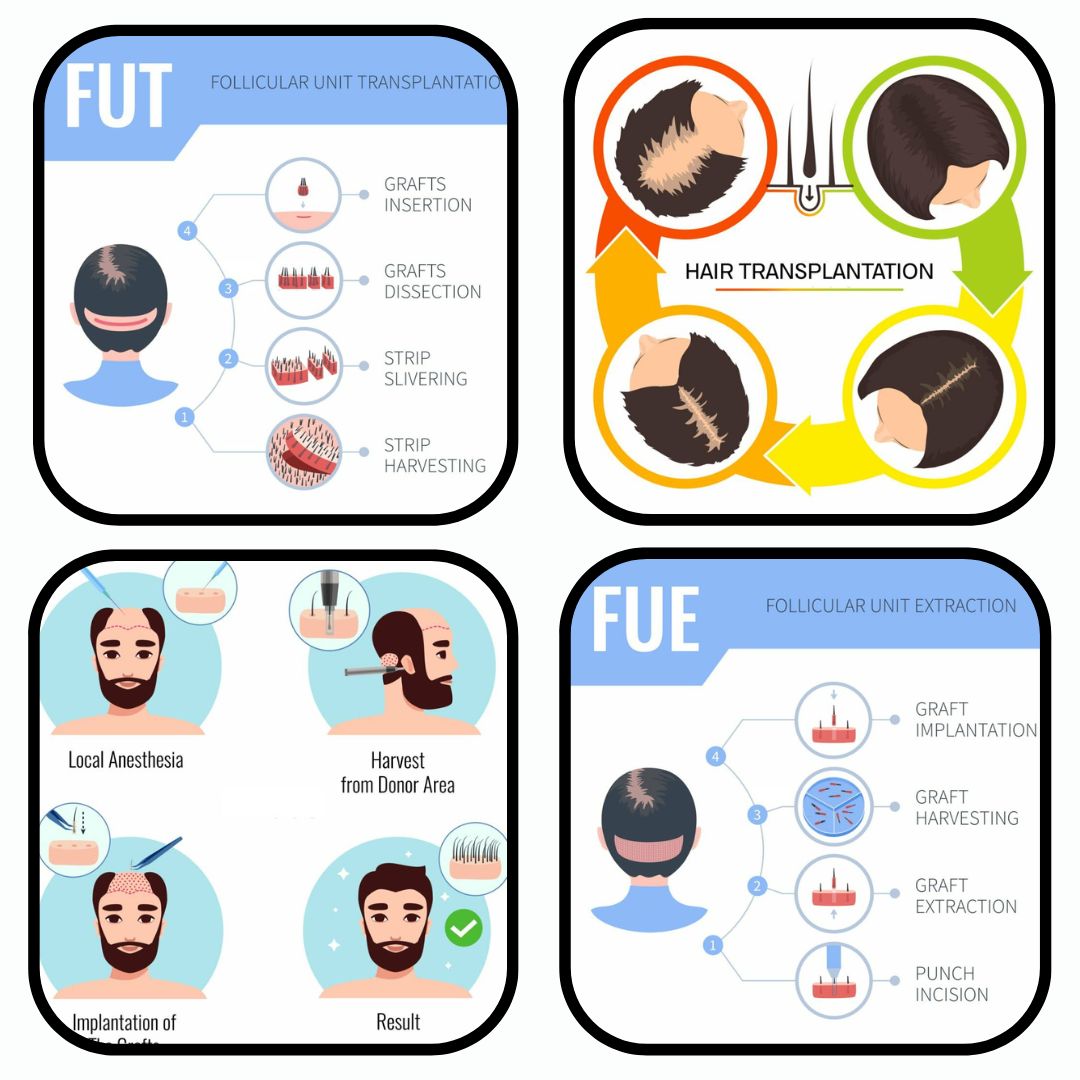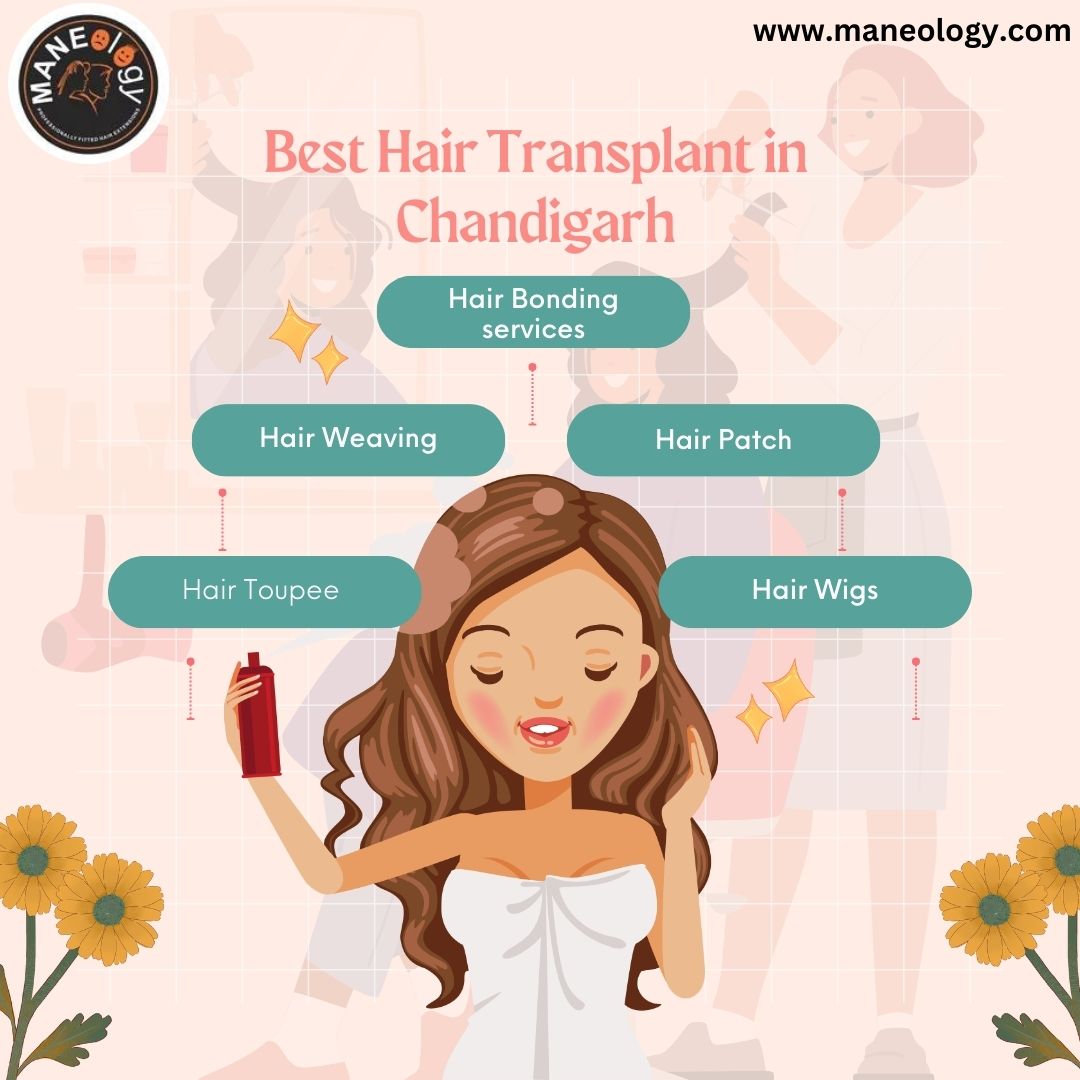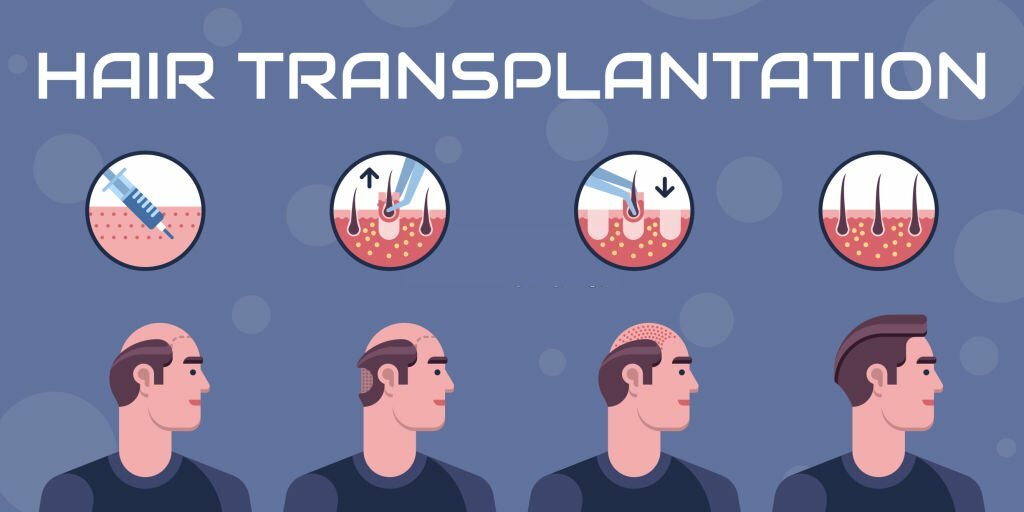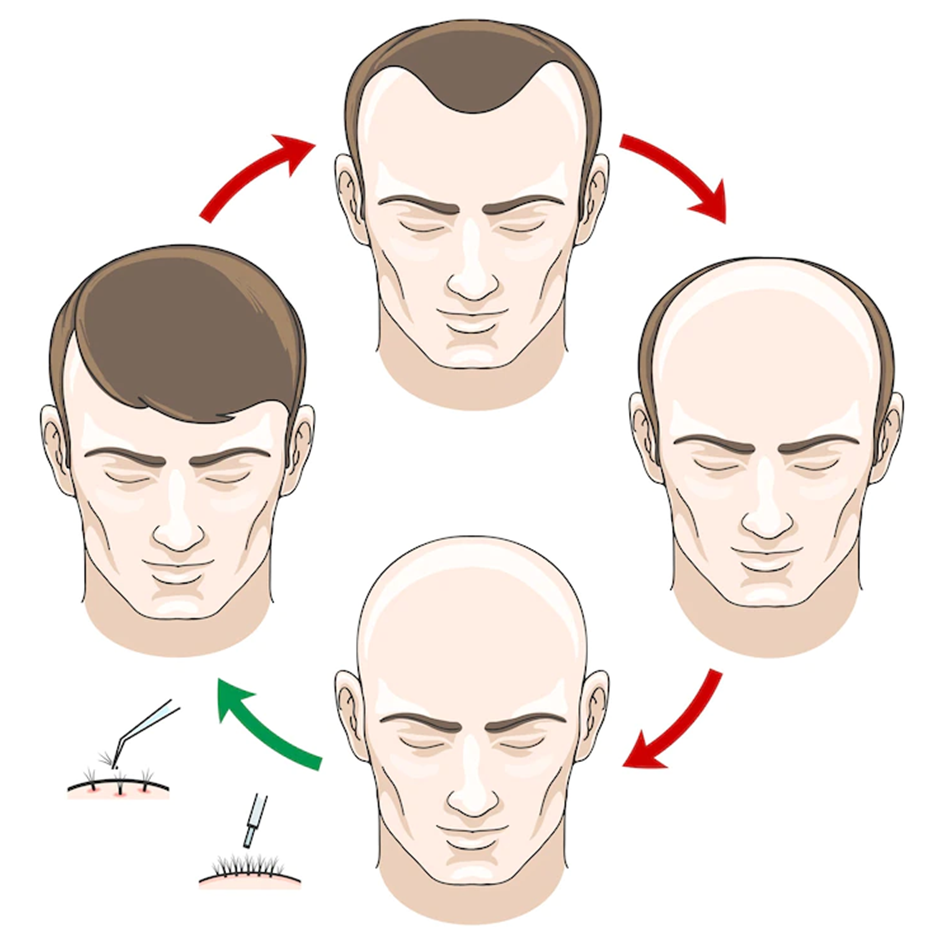Introduction
In the intricate world of hair restoration, the pursuit of natural-looking results through hair transplantation stands as a beacon of hope for many. “A Comprehensive Exploration into the Modern Techniques, Benefits, and Considerations of Hair Transplantation for Natural Restoration” delves into the intricacies of this transformative procedure.
From the evolution of techniques to the myriad benefits and crucial considerations, this exploration navigates the landscape of Best Hair Transplant in Chandigarh, offering insight into its modern innovations and the nuanced factors that define its success. Join us on a journey through the science, artistry, and transformative potential of this remarkable procedure.
-
Definition and Evolution
Hair transplantation, a procedure aimed at restoring hair in areas affected by baldness or thinning, has evolved significantly over time. Its history traces back to the early 20th century when pioneering surgeons explored techniques to address hair loss.
-
Early Techniques
In the 1950s and 1960s, early hair transplant techniques involved punch grafts, where round sections of scalp containing hair follicles were removed and transplanted onto balding areas. While effective, this method often resulted in an unnatural appearance due to the larger graft size.
-
Evolution of Techniques
Mini/Micro Grafting: The 1980s saw the refinement of techniques with the introduction of mini and micro grafts. Mini grafts contained 3-4 hairs, while micro grafts had 1-2 hairs. This advancement allowed for more natural-looking results by mimicking the hair’s natural growth patterns.
-
Follicular Unit Transplantation (FUT)
FUT, introduced in the 1990s, involved harvesting a strip of scalp from the donor area and dissecting it into smaller follicular units containing 1-4 hairs. This technique minimized scarring and improved the aesthetic outcome.
-
Follicular Unit Extraction (FUE)
In the early 2000s, FUE emerged as an alternative to FUT. This method involves extracting individual follicular units directly from the donor area without the need for a strip of scalp. FUE reduced visible scarring and allowed for quicker healing.
-
Recent Advancements
Robotic systems have been developed to assist surgeons in performing FUE procedures with increased precision and efficiency.
-
Enhanced Graft Survival
Improved techniques for handling and preserving grafts have led to better survival rates of transplanted hair follicles.
-
Future Directions
Ongoing research aims to refine existing techniques further, improve graft survival rates, reduce procedure times, and explore potential alternatives to surgery for hair restoration.
The evolution of hair transplantation techniques has been driven by a quest for more natural-looking results, reduced scarring, quicker recovery times, and improved patient satisfaction.
Today, these advancements allow for customized approaches tailored to individual needs, making Best Hair Transplant in Chandigarh an increasingly viable option for those seeking to restore their hair and confidence.
-
The Science Behind Hair Loss Discussing common causes and types of hair loss.
Hair loss, medically termed alopecia, can arise from various factors, leading to different types of hair loss. Understanding the science behind hair loss involves recognizing the common causes and the distinct types it manifests as:
-
Androgenetic Alopecia (Male and Female Pattern Baldness)
Cause
Genetic predisposition and hormonal factors, specifically dihydrotestosterone (DHT), contribute to the gradual shrinking of hair follicles, leading to shorter and finer hair until they stop producing hair altogether.
Pattern
Men typically experience a receding hairline and thinning at the crown, while women often undergo overall thinning without distinct bald patches.
-
Alopecia Areata
Cause
An autoimmune condition where the immune system attacks hair follicles, causing sudden hair loss in patches.
Pattern
Typically manifests as round, smooth patches of baldness on the scalp, although it can affect body hair as well.
-
Telogen Effluvium
Cause
Triggered by severe stress, hormonal changes (such as childbirth or menopause), illnesses, medications, or nutritional deficiencies, leading to a shift of hair follicles into the resting (telogen) phase prematurely, causing excessive shedding.
Pattern
Diffuse thinning across the scalp rather than specific bald patches.
-
Traction Alopecia
Cause
Caused by constant pulling or tension on the hair from hairstyles like tight ponytails, braids, or extensions, leading to hair breakage and eventual hair loss.
Pattern
Typically seen around the hairline or in areas where tension is applied regularly.
-
Medical Conditions and Treatments
Various medical conditions such as thyroid disorders, lupus, and certain medications like chemotherapy can induce hair loss as a side effect.
-
Nutritional Deficiencies
Inadequate intake of essential nutrients, such as iron, protein, and vitamins, can lead to hair thinning and loss.
-
Modern Techniques of Hair Transplantation

FUT (Follicular Unit Transplantation) vs. FUE (Follicular Unit Extraction):
Elaborate on these techniques, explaining their procedures, advantages, and drawbacks.
DHI (Direct Hair Implantation):
Discuss the intricacies of this method and its innovative nature.
Robotic Hair Transplantation:
Explore how robotics have revolutionized the precision and efficiency of hair transplantation.
-
Benefits of Hair Transplantation
Improved Self-Esteem:
Discuss how restoring hair can positively impact a person’s confidence and self-image.
Natural Results:
Emphasize how advanced techniques yield natural-looking results.
Permanent Solution:
Explain how transplanted hair behaves just like natural hair and is a permanent solution to hair loss.
-
Considerations and Precautions
Candidate Evaluation:
Discuss who makes a suitable candidate for a hair transplant.
Risks and Side Effects:
Address potential risks and complications associated with the procedure.
Aftercare and Recovery:
Highlight the post-operative care needed for optimal results.
-
Frequently asked Questions (FAQs):
Q: What leads to hair loss?
Genetic factors play a significant role in the most common cause of hair loss, also referred to as male or female pattern baldness. Usually starting around the temples or crown of the head, it is characterized by a progressive thinning and eventual loss of hair.
Q: What leads to hair loss?
Genetic factors play a significant role in the most common cause of hair loss, also referred to as male or female pattern baldness. Usually starting around the temples or crown of the head, it is characterized by a progressive thinning and eventual loss of hair. Hormonal Changes, Alopecia aerate, autoimmune disorders are the some causes of hair loss.
Q: Is hair transplantation painful?
In order to numb the scalp, patients undergoing hair transplantation usually need local anaesthetic. This guarantees the patient has no pain during the surgical procedure. But following the surgery, it’s normal to feel a bit uncomfortable or painful as the anaesthesia wears off. The doctor’s recommended over-the-counter painkillers can often help control this discomfort.
Q: How long does a hair transplant procedure take?
Depending on the technique (FUT or FUE), the quantity of grafts being transplanted, and the complexity of the case, a hair transplant surgery may take a variety of times. A session can last anywhere from four to eight hours on average.
Q: Can women undergo hair transplantation?
Yes, ladies can get hair transplants. It’s not just for men either. This technique can help women who are experiencing hair loss for a variety of causes, including hormone fluctuations or genetic factors.
Q: Exist non-surgical hair transplanting alternatives?
Best Hair Transplant in Chandigarh has a number of non-surgical alternatives, including scalp micropigmentation (SMP), platelet-rich plasma (PRP) therapy, low-level laser therapy (LLLT), and drugs like monoxide and finasteride. Without requiring surgery, these solutions seek to reduce hair loss or give the appearance of thicker hair.
Q: How soon can I expect to see results after a transplant?
Patients typically start to see initial growth between 3 to 6 months post-transplant. However, full results may take 12 to 18 months to become apparent as the transplanted hair grows and thickens.
Q: Are the results of a hair transplant permanent?
Permanence of Results: The transplanted hair is typically permanent because it’s taken from areas resistant to balding (like the back of the scalp). However, the natural development of hair loss in other areas may persist, hence requiring future touch-ups or more treatments.
Q: What elements affect a hair transplant’s success rate?
The technique employed, the patient’s hair type and quality, the surgeon’s expertise and experience, post-operative care, and following recovery instructions are all important success factors.
Q: Can transplanted hair be styled or coloured?
Yes, transplanted hair can be styled and coloured in the same way as natural hair. The transplanted hair can be cared for in the same manner as your natural hair once it has grown fully.
Q: Are there any age limit for a hair transplant?
Age Limitations: There isn’t a strict age limit for a hair transplant, but it’s essential that the patient’s hair loss pattern is stable enough to predict future loss and plan the transplantation effectively.
Q: How to choose the right clinic for a hair transplant?
Choosing the Right Clinic: Look for clinics with experienced surgeons, good patient reviews, proper accreditation, and a focus on patient care and safety.
Q: What should I expect during the recovery period?
Recovery Period: The recovery period can involve mild discomfort, swelling, and scabbing at the transplant site. In order to ensure appropriate recovery, which often takes a few weeks, patients are urged to carefully follow the post-operative recommendations.
Q: Is it possible for someone to get a hair transplant if they have a medical history of conditions?
Medical Conditions and Hair Transplant: Due to their medical history, individuals with medical conditions should discuss the safety and viability of the treatment with their Best Hair Transplant in Chandigarh.
Q: What safety measures need to be followed following a hair transplant?
Precautions after Transplantation: Following a hair transplant, patients should adhere to the specific guidelines given by their surgeon. These guidelines may include avoiding physically demanding activities, shielding the scalp from sunlight, and taking prescribed drugs to promote healing and guard against infection.
The Blog explores the entire field of hair transplantation, including everything from the science underlying hair loss and transplantation methods to the procedure’s historical development. The salient points are as follows:
-
Evolution of Hair Transplantation Techniques

Hair transplantation has evolved from punch grafts to more refined methods like mini/micro grafting, FUT, and FUE.
Advancements in technology, such as robotic assistance, have enhanced precision and efficiency in procedures.
-
Understanding Hair Loss:
Hair loss can result from various causes, including genetic factors (androgenetic alopecia), autoimmune conditions (alopecia aerate), stress (telogen effluvium), traction, medical conditions, and nutritional deficiencies.
Different types of hair loss manifest distinct patterns and are influenced by various factors.
-
Considerations for Hair Transplantation:
Women can also undergo hair transplantation.
Non-surgical alternatives like medications, PRP therapy, LLLT, and SMP exist for those not opting for surgery.
Costs for hair transplant procedures vary widely based on factors like location, technique, and the number of grafts.
-
Expectations and Results:
Results from hair transplantation take time, with initial growth seen around 3 to 6 months and full results in 12 to 18 months.
Transplanted hair is generally permanent, but the natural progression of hair loss in other areas might necessitate additional treatments.
-
Factors Influencing Success:
The success of a hair transplant depends on factors like surgeon expertise, hair quality, technique, and post-operative care.
-
Post-Transplant Care and Recovery:
Recovery involves mild discomfort, swelling, and scabbing at the transplant site, requiring adherence to specific post-operative instructions for proper healing.
-
Considerations and Precautions:
Individuals with medical conditions should consult with healthcare providers before undergoing a hair transplant.
Choosing the right clinic involves assessing the surgeon’s experience, patient reviews, and clinic accreditation.
The article encompasses the historical journey, scientific understanding, considerations, and expectations associated with Best Hair Transplant in Chandigarh, providing a holistic view for those considering or exploring options for hair restoration.
-
Emphasizing the transformative impact of modern hair transplantation techniques.
Modern Best Hair Transplant in Chandigarh techniques have revolutionized the landscape of hair restoration, offering transformative solutions with remarkable precision and natural-looking results. Here’s how these techniques have brought about a transformative impact:
-
Natural Aesthetics:
Advanced techniques like FUT and FUE allow for the transplantation of individual follicular units, mimicking the natural growth pattern of hair.
Microscopic precision ensures the strategic placement of grafts, creating seamless transitions and undetectable results.
-
Customized Approaches:
Surgeons can tailor treatments based on each patient’s unique needs, considering factors like hair quality, loss pattern, and desired outcomes.
The ability to harvest grafts precisely enables the creation of bespoke hairlines and density, restoring a natural and personalized look.
-
Minimized Scarring and Discomfort:
Techniques like FUE minimize visible scarring by extracting individual follicular units from donor areas without the need for a linear incision.
Reduced invasiveness translates to quicker healing times and less post-operative discomfort for patients.
-
Diverse Applications:
Hair transplantation isn’t limited to scalp restoration. It can be applied to eyebrows, facial hair, and body hair, offering solutions for various aesthetic concerns.
-
Enhanced Confidence and Quality of Life:
The transformative impact of these techniques goes beyond physical appearance, significantly boosting individuals’ confidence and self-esteem.
Restoring a full head of hair often leads to a profound improvement in quality of life, positively impacting social interactions and emotional well-being.
-
Continued Innovation and Advancements:
Ongoing advancements in technology and techniques continue to refine and improve the field of Best Hair Transplant in Chandigarh, promising even more natural and effective results in the future.
The transformative impact of modern hair transplantation techniques extends far beyond mere aesthetics, offering individuals a renewed sense of self-assurance and a chance to reclaim their identity by restoring not just their hair but also their confidence and zest for life.
Embarking on a hair restoration journey is a significant decision that warrants careful consideration and research. Here’s an encouragement to readers to prioritize informed choices and reputable clinics for their hair restoration needs:
-
Educate Yourself:
Take the time to understand different hair loss causes, transplantation techniques, and available alternatives. Knowledge empowers better decision-making.
-
Consultation:
Schedule consultations with qualified surgeons or specialists to discuss concerns, expectations, and suitable treatment options.
-
Importance of Reputable Clinics:
Expertise and Experience:
Choose clinics with experienced surgeons known for their expertise in Best Hair Transplant in Chandigarh. Look for certifications, accreditations, and a track record of successful procedures.
Patient Testimonials:
Read reviews and testimonials from previous patients to gauge their experiences and satisfaction with the clinic’s services.
Transparency and Ethics:
Opt for clinics that prioritize transparency, ethics, and patient-centric care. Clear communication and ethical practices are key indicators of a reputable clinic.
-
Consideration for Comprehensive Care:
Holistic Approach:
Seek clinics that offer comprehensive care, including pre-operative assessments, personalized treatment plans, and thorough post-operative guidance.
Follow-Up and Support:
A reputable clinic will provide adequate follow-up care and support to ensure optimal results and address any concerns post-procedure.
-
Making Safety a Priority:
Safety Standards: Ensure the clinic adheres to strict safety standards, maintains a sterile environment, and follows best practices to minimize risks of complications.
-
Trust Your Instincts:
Trust and Comfort: Ultimately, trust your instincts. Choose a clinic where you feel comfortable, where your questions are answered satisfactorily, and where you sense genuine care for your well-being.
-
Best Hair Transplant in Chandigarh

To help you start your search, here are some reputable clinics in Chandigarh known for their expertise in hair transplantation:
Maneology Hair Clinic Renowned for FUE procedures and personalized care plans.
Maneology Hair Restoration Center Offers a range of modern techniques and post-operative support.
Maneology Hair Institute Known for its advanced robotic hair transplantation technology.
Maneology guarantees high-quality hair restoration with faster results by using surgical and non-surgical hair replacement methods. We offer our clients the completely natural look and feel of actual growing hair in the style and colour of their choice by creating a completely customized non-surgical hair replacement system. Maneology provides the best hair extensions in Chandigarh. With millions of wigs sold in recent years, Maneology has established itself as the authority on wearable hair in Chandigarh.
Conclusion
Continued advancements in technology and research suggest a promising future for hair transplantation. Techniques are becoming more refined, offering even more natural-looking results and quicker recovery times.
The decision to undergo a Best Hair Transplant in Chandigarh for natural restoration is deeply personal. However, armed with comprehensive knowledge about the techniques, benefits, considerations, and available options in Chandigarh, individuals can navigate this journey with confidence.
Remember, consulting with experienced professionals and thoroughly researching clinics can significantly contribute to a successful and satisfying hair restoration experience.
Hair transplantation isn’t just about regaining lost hair; it’s about restoring confidence, enhancing self-esteem, and embracing a renewed sense of self.


